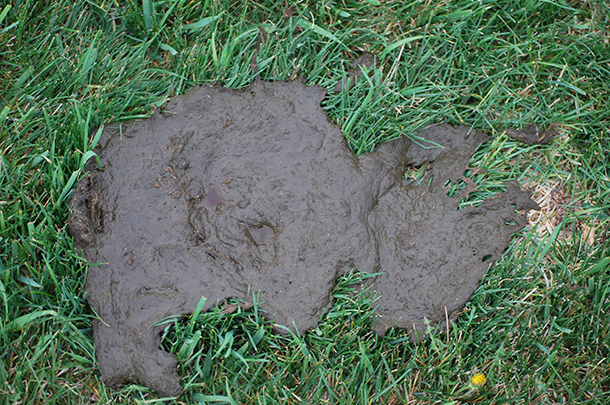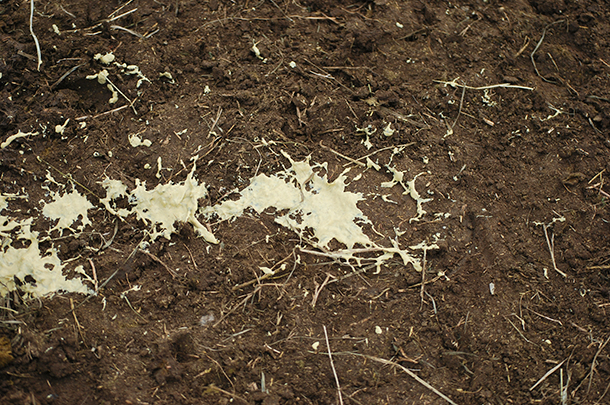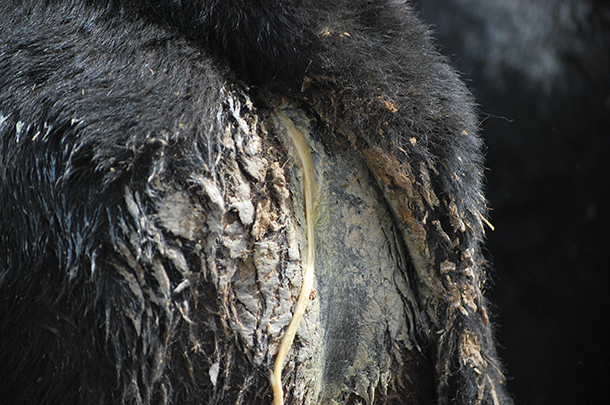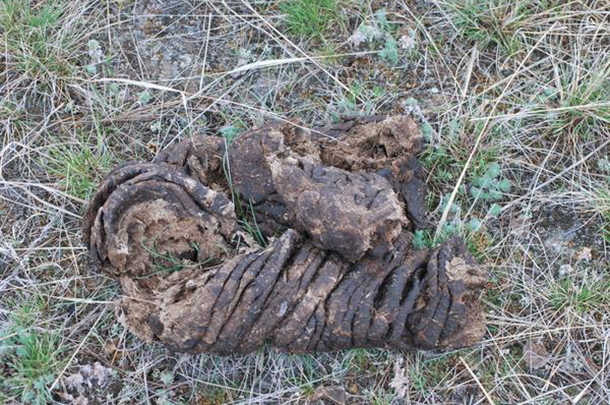"It's a lost art form that's been used for generations," says Ted Perry, animal nutritionist for Purina. "Assessing nutrition can be as simple as looking down at the manure." Perry explains manure can tell us everything from when to add protein to the diet to catching problems like acidosis before it’s a problem.
While manure can't tell you everything about bovine health, it is a helpful tool. Dr. John Hall of the University of Idaho states, "Fecal matter is one of many indicators of cattle health and nutrition."

The color of the manure is usually indicative of feed color. Winter months mean brown forage, thus brown manure. Higher quality forages mean brighter colored stools. However, if you have a calf receiving creep feed and the stool looks light and pasty, it is time to add some intake modifiers. Scours, caused by an E. coli overgrowth in the rumen, will show as gray or misty colored, extremely loose manure. Most ranchers are familiar with scours and know treatment is imperative. Bloody stool could indicate coccidiosis, and intestinal discharge of tissue is often associated with salmonella.
Sickness aside, how loose is too loose? According to Perry, manure that won't pile indicates a problem. "If a cow pie won't stack up an inch or so, the diet needs to be adjusted."

Runny stools mean cattle are not metabolizing all potential nutrients. High protein diets with less fiber equate to runny stools. Adding fiber is beneficial at this point (free-choice grass hay or straw is an easy remedy) to ensure that cattle utilize all the protein they ingest and aren't just losing it out the other end. Consistency can be a helpful indicator of health or an obvious sign of feed type.
Feedlot manure differs from pasture manure. Feedlot manure often looks pastier than pasture manure due to feed and environment. "Feedlot manure is looser than an animal on dry hay, but shouldn't be watery or runny," Hall says. Watery or runny can be an indication of acidosis or Johne's disease. While more common in dairy cattle, Johne's is becoming more prevalent in beef cattle. Since no treatment exists for Johne’s, prevention is crucial. Cattle with Johne's disease have difficulty maintaining weight in addition to runny stools.

On the flip side, if manure looks thick and fibrous, it is high time protein be added to the diet. Perhaps your grandpa used to walk the pastures and kick manure with his boot. If it's dry and grainy, protein is a must. Wouldn't it be nice to know at the initial onset though, before it got so dry it didn't even stick to your boot? How do we know when we've crossed the line into needing more protein?
Perry says once a cow pie begins folding on itself, there's a need for additional protein. "Manure that folds together and looks more like bread dough indicates low protein." There are several protein supplements on the market that make a great addition to low protein pastures typical in late summer, fall and winter. Protein supplements feed the rumen microbes so they can more fully digest forages.

How else do you know you're getting the most out of your feed? Seed hulls in manure can be dissected to evaluate digestion. Pick out hulls and see if they're empty. If so, the cattle are metabolizing nutrients. However, Hall says picking through manure isn't always warranted. "If you are feeding grain, you're going to see seed in manure, especially if it isn't ground. What you want to notice is the overall percentage. If a cow eats 1 pound of grain, there's usually only a small percentage left in the manure."
So the next time you’re wondering what feed to put in front of your cattle, maybe take a look behind them first. After all, the proof is often in the pile. ![]()
Marci Whitehurst is a freelance writer based in Montana.
PHOTO 1: Healthy manure pile.
PHOTO 2: Runny manure from green grass.
PHOTO 3: Runny, pasty manure indicating scours.
PHOTO 4: Intestinal discharge.
PHOTO 5: Fibrous manure with "bread dough folds." More protein needed. Photos by of Marci Whitehurst.








